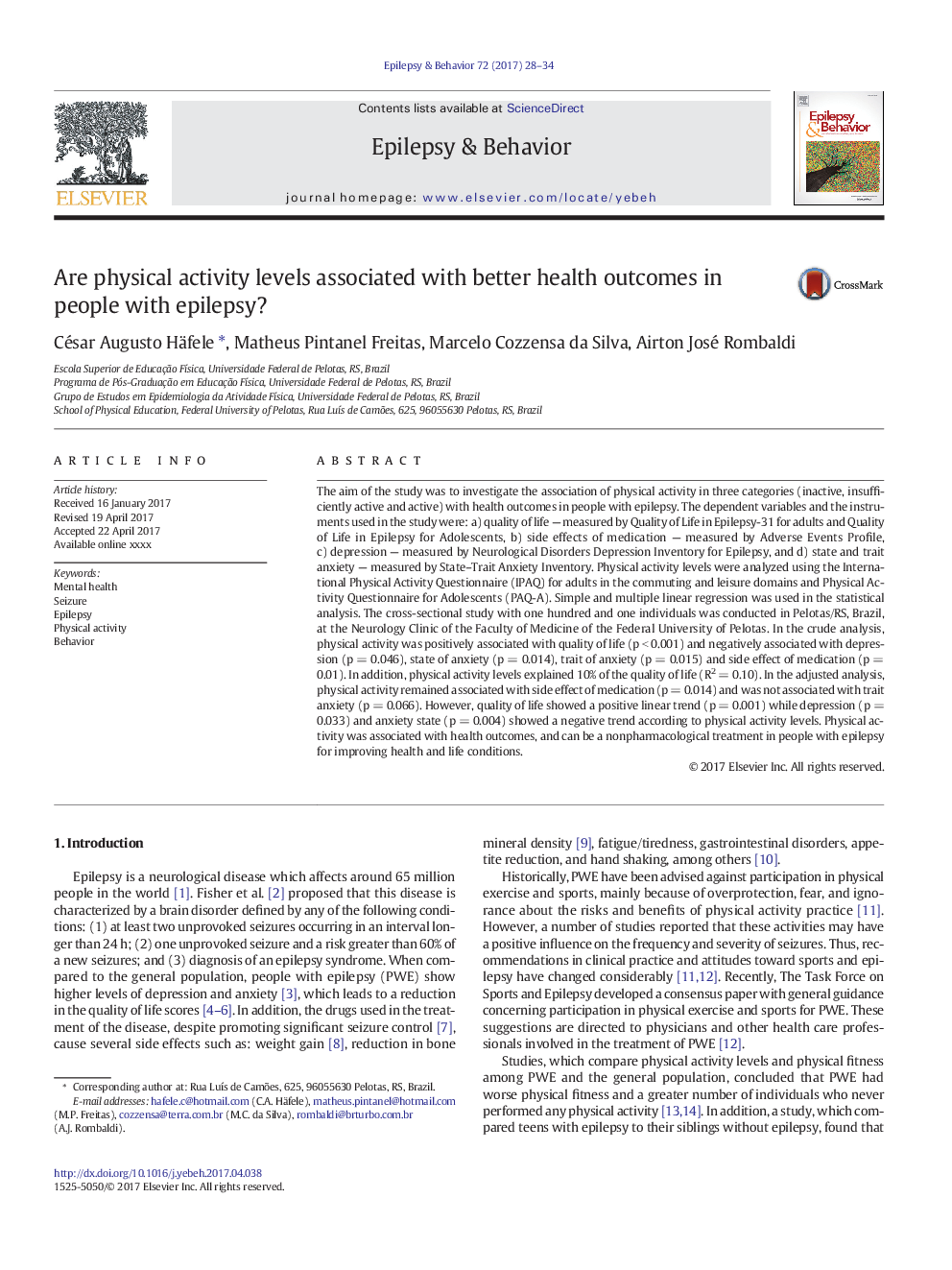ترجمه فارسی عنوان مقاله
آیا میزان فعالیت بدنی با نتایج سلامتی بهتر در افراد مبتلا به صرع ارتباط دارد؟
عنوان انگلیسی
Are physical activity levels associated with better health outcomes in people with epilepsy?
| کد مقاله | سال انتشار | تعداد صفحات مقاله انگلیسی |
|---|---|---|
| 120492 | 2017 | 7 صفحه PDF |
منبع

Publisher : Elsevier - Science Direct (الزویر - ساینس دایرکت)
Journal : Epilepsy & Behavior, Volume 72, July 2017, Pages 28-34
ترجمه کلمات کلیدی
سلامت روان، تصرف، صرع، فعالیت بدنی، رفتار - اخلاق،
کلمات کلیدی انگلیسی
Mental health; Seizure; Epilepsy; Physical activity; Behavior;

